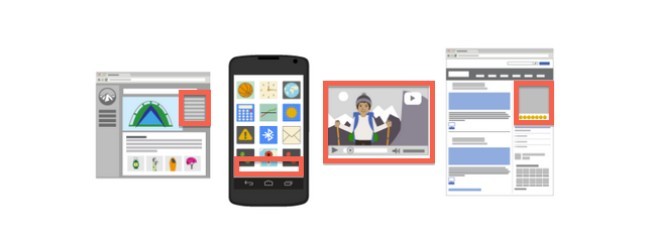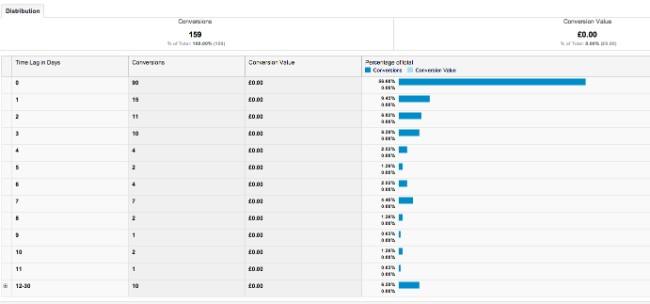Experienced ecommerce pros know the deal.
There's no magic formula when it comes to marketing to customers.
It takes testing, making mistakes and learning what your specific customers want.
One of the best ways to find new customers and bring back the old ones is by retargeting. And the same idea of testing and making mistakes rings true for that.
The problem is that many online stores have trouble with retargeting. So what are some of the big problems with your retargeting efforts?
A Brief Description of Retargeting
Have you ever wondered why the internet seems to read your mind when it comes to ads? You might search for a new TV on Amazon, then all of a sudden, every website you go to knows that you're shopping for a new TV.
This is retargeting.
It happens through ad networks like the Google Display Network or Facebook.

Since so many companies are signed up on these networks, and many websites have ads from the same networks, it's all connected.
Retargeting is done with the help of browser cookies. So, you look for that TV on Amazon and a cookie is logged in your browser with the TV product data. Then, you jump to your favorite sports blog, and what do you know? That blog is part of the Google network, so the ads reveal that same exact TV you considered on Amazon. Nifty, huh?
It's a beautiful system for merchants, serving as a constant reminder for people to come back to your store. Think of it as another abandoned cart technique, except the ad network does most of the work for you.
Now that we understand what retargeting is, let's explore some of the bigger problems you might be having with your retargeting efforts.
Retargeting Problem #1: Not Having a Limit on Your Ad Frequency
Studies show that high-frequency ads have a negative impact on the way consumers view a brand.
If you've ever gone on a date and realized that the person is way too clingy, you know the feeling. Customers get a more creeped out vibe when they see your ads over and over again. They think, “How are they finding me wherever I go?” And it almost looks desperate to the point that the customers might think that your company isn't all that great to begin with.
Instead of being annoying, put a limit on your ad frequency. This not only makes your retargeting efforts more appealing, but it creates an environment where the consumer isn't bothered.
Retargeting Problem #2: Using the Same Boring Ads Over and Over
For some reason, in our heads, it makes sense to create one ad and spread it all over the internet. You even see this with regular marketing, where a company sends out a social media post but include the same imagery, copywriting and digital assets in their email newsletter, Twitter and banner ads.
Some of this logic might come from the fact that digital assets are expensive and time-consuming to create. You think, “I've already made a beautiful image for my social media, so why not use it everywhere?”
This thinking can get you into some retargeting trouble.

Think about all of the ads people see every day. They're bombarded to the point where many consumers simply block out the ads without even knowing it. So what happens when they start seeing the same ad from you over and over again?
They ignore them, similar to how drivers unconsciously start to ignore speed limit signs. They know the signs are there, but there's not much registering in their mind to respond.
Retargeting Problem #3: Your Cookie Window is Too Long or Too Short
The default cookie window for many ad networks is 30 days. It sounds like a good place to start at, but in reality, you're either spending too much money on customers who aren't going to convert or you're limiting your chances of grabbing a customer who's more likely to buy after 30 days. This is especially true for industries like travel and plastic surgery.
The time lag until conversion can typically be found in the analytics section of your ad network. As you'll see, some customers have much longer conversion paths than others.

This means that one company might have customers who take their time to make a decision, but eventually, they pull the trigger and make the purchase. Expensive items are usually bought in this manner. On the other hand, your business might find that your customers make quick buying decisions. After that, the chances of getting a conversion decreases significantly.
It all depends on your own stats, so we encourage you to review what's going on with your own potential customers. Is that 30-day cookie window too long or too short? Who knows- it might actually be spot on!
Retargeting Problem #4: You're Not Using Segmentation
Segmentation is the process of retargeting your ads based on what individuals (or groups of customers) are shopping for. Segmentation is popular with email marketing (sending targeted emails to the right people,) and ads are no different.
By default, most ad networks have it checked off where a retargeting campaign gets sent to all of the visitors to your site.
Well, that's not ideal, right?
So, you're sending the same retargeting ad to these two people?: A man who's shopping for running shoes and a woman searching for headbands.
Each customer is unique, so you're bound to have better conversion rates if you segment based on what people are shopping for and the types of people they are.
Retargeting Problem #5: Searching for the Golden Ticket
Blogs, courses, and other training materials are great to keep up on the trends for your industry and to find little tidbits of ecommerce information. But many ecommerce professionals fall into a trap where they keep searching for that golden ticket.
They assume that if they read enough about retargeting, someone will eventually give them the perfect formula.
But there's no substitute for testing and failing and trying again.
You'll never get it right the first time, but you're bound to improve the next time and the time after that. Marketing, and retargeting, in particular, is about establishing a strategy for success. You must test that strategy then go back to figure out what went right and what went wrong.
If you're looking for the magic formula that'll increase your ROI exponentially overnight, you're wasting your time.
Are You Ready to Fix Your Retargeting Mistakes?
The great thing about identifying problems with your retargeting efforts is that they're generally easy to fix. Take a moment to bookmark this page in order to remind yourself about the right ways to retarget.
After that, let us know in the comments if you have any questions.
header image courtesy of Josh Martin







Comments 0 Responses